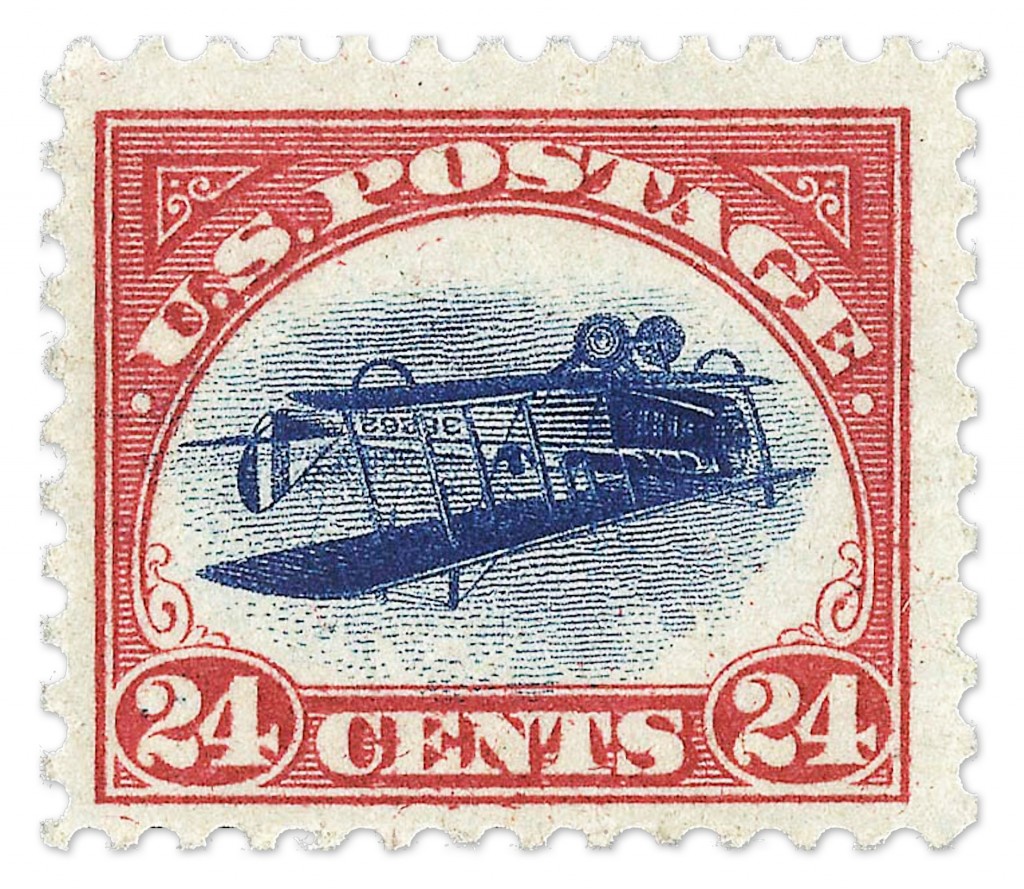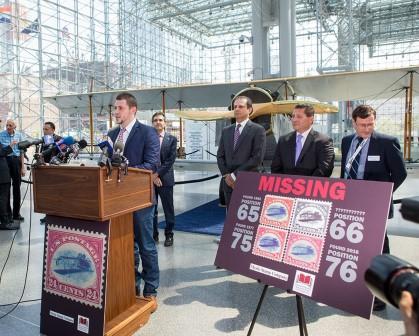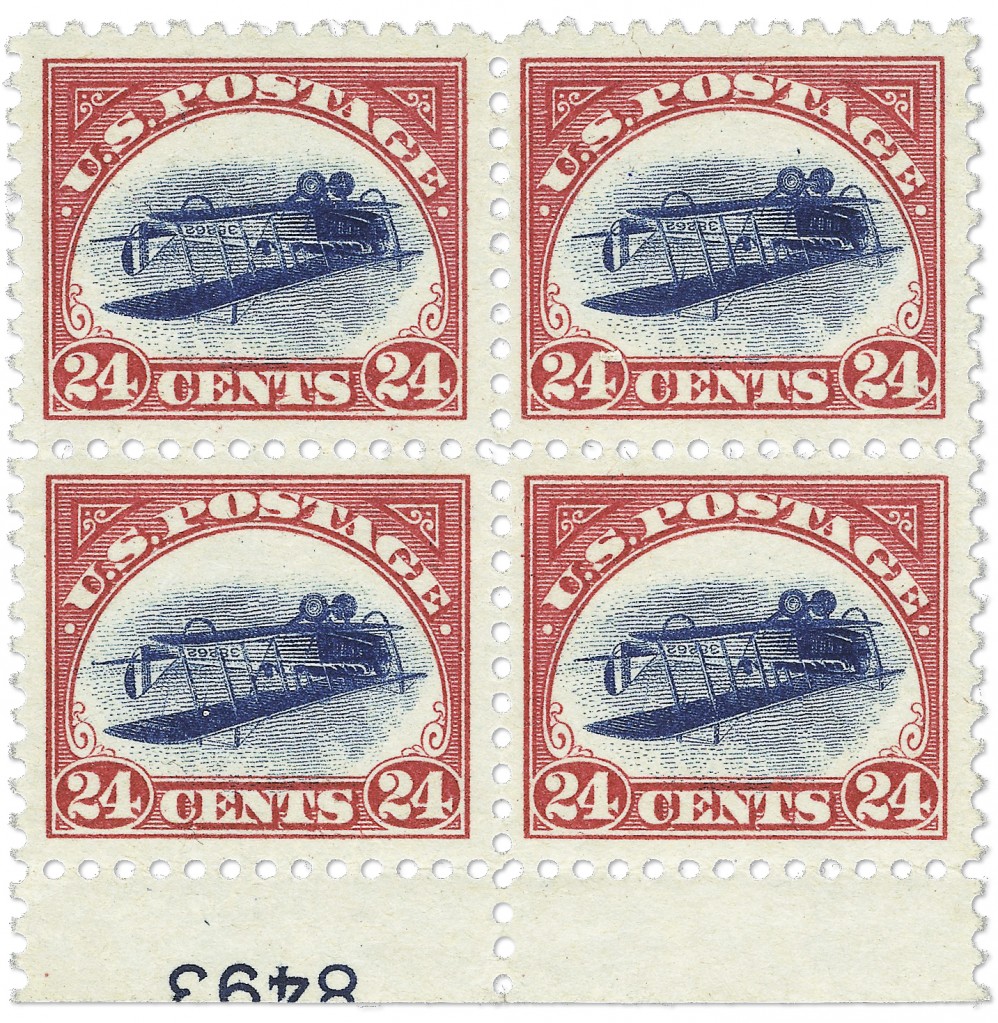The Provenance of the Inverted Jenny
Views : 4959

The beautiful red-blue Inverted Jenny.
This stamp showing the aircraft Curtis JN-4 was issued in the second decade of the 20th century. On seven sheets, the aircraft was imprinted upside down by mistake. Defective stamps were destroyed, but still, one such sheet went on sale and was divided into separate blocks and stamps. In the same year when issued, a collector named William T. Robey bought this sheet for as much as $24.

Once, one of the rare Inverted Jennies was stolen from a man who got it from one of his grandparents.
Luckily, he managed to get it back. The image was taken from the USPS blog.
In the first decade of the 20th century, the postal service of America attempted to carry out an experiment and transport correspondence by air. The experiment turned out to be successful and in 8 years, it was decided to initiate regular flights. It was decided to set a tariff of 24 cents for this service. Since this charge was quite high, the office released a new stamp, which showed a biplane specially selected for the transport of correspondence. The stamp was designed and printed in large confusion in sheets of a hundred pieces. Since the stamp was two-colored, each sheet was passed through the printing press two times in a row. In the production process, several incorrectly printed sheets were found and immediately destroyed, but one such sheet went unnoticed. The first stamps went on sale on May 13 and some collectors, who assumed the existence of stamps with a printing error, immediately arrived at the department to look through the sheets and find the inverted ones among them. This is how William T. Robey found the single sheet with the inverted stamps.

A block of four stamps cut by H. R. Green himself.
What happened next remains unknown so far since the testimonies of the philatelist were different. It may be assumed that after his successful purchase, he started offering the sheet to different stamp dealers. About a week later, the postal inspectors came to his place to withdraw the sheet of inverted stamps but Robey managed to hide it from them. Soon, he sold the sheet to a well-known stamp dealer for 15 thousand dollars, who immediately resold it for 20 thousand USD to Howland Robinson Green. In his turn, Green divided the sheet into separate parts and began selling individual pieces and blocks of stamps. One of the inversions, which he decided not to sell, he put in a locket given to his wife. Years later, this medallion was realized at Siegel Auction Galleries. After that, blocks and single stamps were offered at various stamp auctions and the price for them increased every year.
At the moment, the catalog price of the central unit is 600 thousand US dollars. The Inverted Jenny is a stamp, which philatelists value and love greatly due to its provenance. Nevertheless, these pieces cannot be regarded as rare stamps. There are also several varieties of this stamp, which cost much less. Nonetheless, almost any stamp collector would love to add this valuable item to their collection.